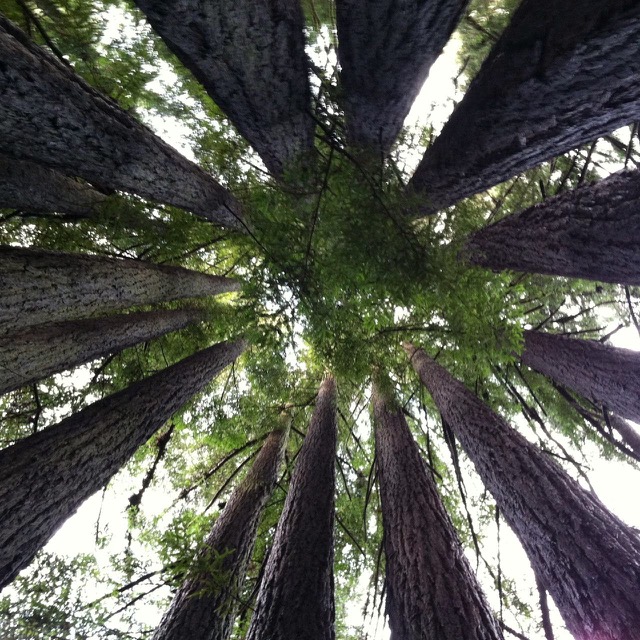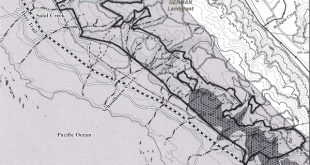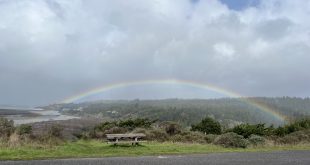by Guy Kovner, The Press Democrat, May 1, 2018
[excerpt:]
. . .
At Armstrong Redwoods State Natural Reserve near Guerneville, the 308-foot Colonel Armstrong tree stands so tall that earthbound admirers can’t see the behemoth’s uppermost 100 feet.
But it and the other old-growth redwoods of equal majesty are essentially relics, comprising a mere 7 percent of the 1.6 million acres of the coastal redwoods, a species that flourished throughout the Northern Hemisphere during the age of dinosaurs and is now found nowhere else on Earth but the California-Oregon coast.
Just over 90 percent of the redwood forests are relatively slender second-growth trees that sprouted within the last 20 to 100 years and, unlike their massive elders, face a perilous future of more frequent and intense wildfires brought on by climate change.
“That was jaw-dropping to us,” said Emily Burns, director of science for Save the Redwoods League, a San Francisco-based nonprofit that has worked to protect and restore redwoods since 1918. “We saw there wasn’t much old growth left.”
Burns is a co-author of the league’s 52-page study, “State of Redwoods Conservation Report,” assessing the health of redwoods after a two-century onslaught from commercial logging, development, road building and agriculture, as well as fire suppression.
. . .
In Sonoma County, where logging the redwood giants along the Russian River began in 1836, there are 143,377 acres of redwoods, including 9,037 acres of old growth, most located on private property.
There are 7,249 acres of mature second-growth redwoods in place of trees felled in the early 1800s that are now up to 4 feet in diameter and beginning to regain the “habitat qualities” of old-growth forests, Burns said.
“That shows us recovery is possible,” [s]he said.
The county has 57,282 acres of intermediate second-growth trees replacing redwoods harvested within the last century that are now 16 to 32 inches in diameter.
There are 69,808 acres of young second-growth redwoods replacing trees cut down in the last two to four decades that now average 8 inches in diameter. They comprise nearly half of Sonoma County’s redwoods and the same percentage of all redwoods in the region.
“The good news is there’s tremendous restoration potential because those logged forests can recover,” Burns said.
. . .
To read the entire article, visit The Press Democrat:
California’s towering redwoods face uncertain future, report says
For more information, read the State of Redwoods Conservation Report,
published by the Save the Redwoods League.

 Friends of Gualala River Protecting the Gualala River watershed and the species living within it
Friends of Gualala River Protecting the Gualala River watershed and the species living within it


